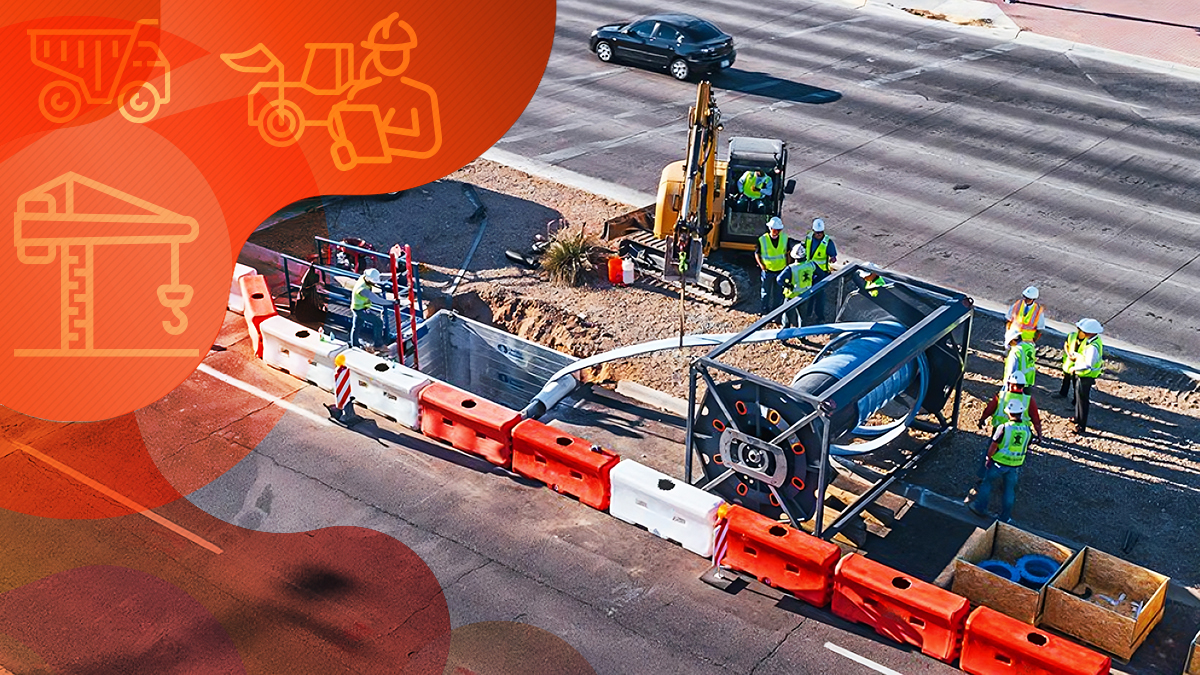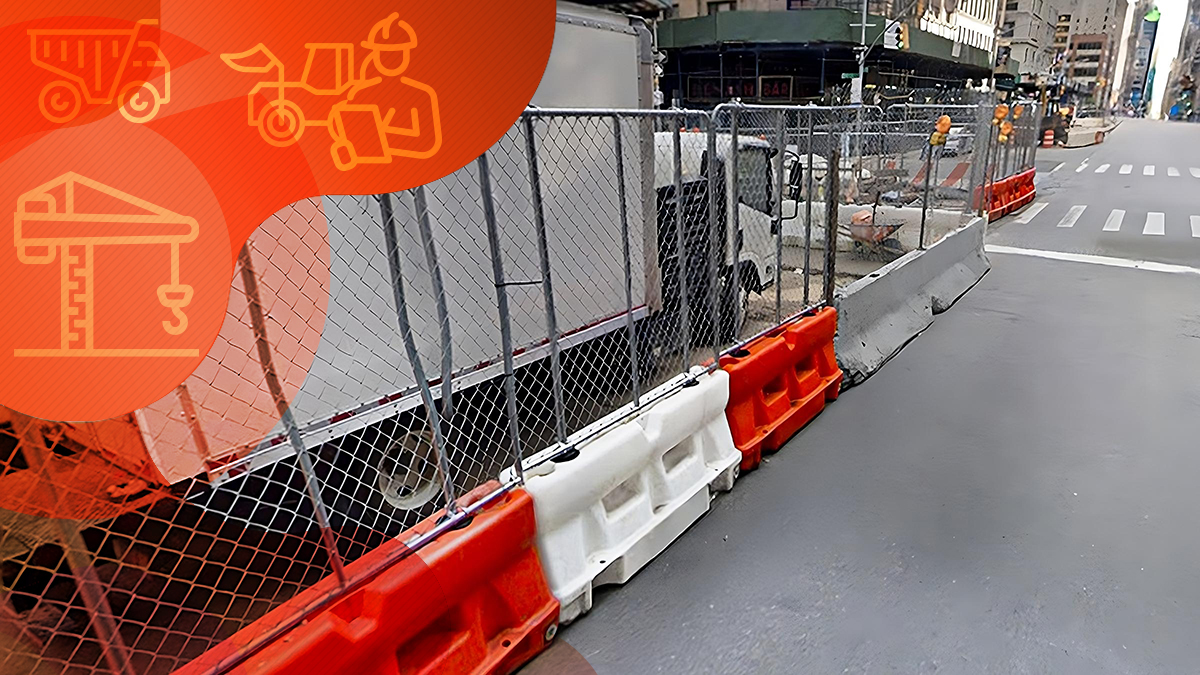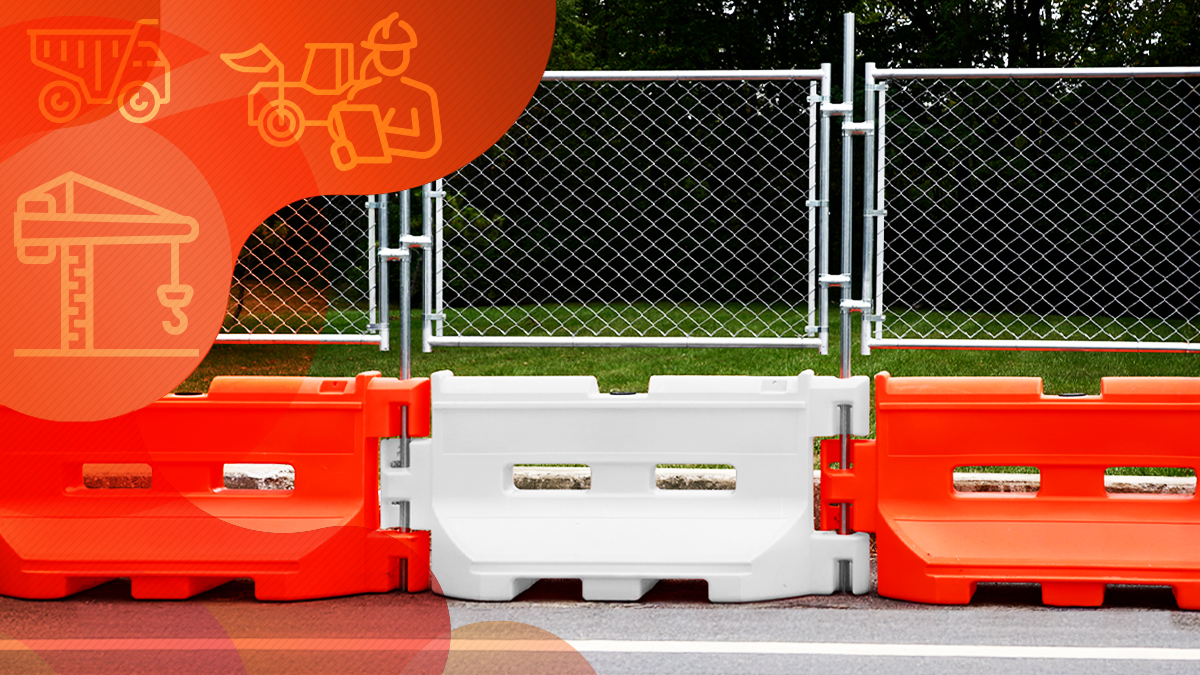Semi-Permanent Fences: the Ultimate Solution for Stability and Security
Discover the stability, flexibility, and cost-effectiveness of semi-permanent fencing for your long-term projects.

Reliable, convenient perimeter security solutions are essential in industries like contracting or construction, and temporary fencing is a top solution for some excellent reasons. Temporary fences are cost-effective, versatile, and reusable. However, they may not be appropriate for every job site, project, or situation.
Temporary fencing can be prone to instability, especially under very windy conditions or when installed over uneven terrain. However, there are ways to turn temporary fence panels into a semi-permanent fence, to give you the stability and strength you’re looking for -- without the need to install traditional permanent fencing.
What Is Semi-Permanent Fencing?
In contrast to the standing feet or bases that support temporary fence panels above ground, a semi-permanent fence is supported by galvanized steel posts driven into the ground at regular intervals.
Once all the fixed posts are in place, installation teams attach temporary fence panels using special ring couplers to hold them in place.
Another option for creating a semi-permanent fence is to drive the posts into the ground and use chain-link mesh to bridge the gaps, forming the fence. This method is effective but more labor-intensive and time-consuming than simply using pre-made fence panels.
Like temporary fencing, a semi-permanent fence provides a cost-effective, reliable way to keep your job site perimeter secure. However, its post-driven support system makes it significantly more stable and keeps your fence standing. Even if heavily weighted, foot-supported temp fence panels can topple when under enough stress.
Why Use Semi-Permanent Fences
Both temporary fences and semi-permanent alternatives are fantastic perimeter solutions for construction sites and contracting projects. However, some situations, projects, and needs make a semi-permanent fence the smarter choice.
Here are a few key reasons why you might want to forego temporary fence panels in favor of a semi-permanent fence line for certain work sites.
Stability in changing conditions
Some projects require a fence line that can hold its own under conditions that might shift over time or even from one area of the job site to another. Factors to consider can include, but may not be limited to, the following:
- Ground that’s soft or uneven
- Unpredictable weather patterns
- Unusually high winds or extended windy periods
- Inclement weather
- Determined intruders
While conditions like these might be too much for a temporary fence, especially over time, a semi-permanent fence will remain standing.


Long-term use
Although you can use a semi-permanent fence to secure any job site, it’s an especially good fit for a long-term project with a fixed perimeter.
If your project is set to last longer than a year, you need a fence line in place capable of withstanding changing weather patterns and remaining stable over the long haul. A semi-permanent fence gives you the security and strength you need without the hassle of installing permanent fencing.
Cost-effective
Although strong and stable, permanent fencing is really only good for a single installation, as it usually involves securing fence posts in place with cement. When it’s time to remove the fence line, the posts must be cut off at the ground and recycled or otherwise disposed of.
In contrast, creating a semi-permanent fence allows for materials to be reused and reinstalled multiple times, especially with proper care and storage. When a project concludes, you simply uninstall the attached fence panels, remove the support posts from the ground, and store them until needed again.
How to Install Semi-Permanent Fencing
A semi-permanent fence is nearly as easy to install as a temporary fence line. It’s even possible for one person to install it on their own, although the process will go easier and faster with at least two people working together.
Although installation specifics may vary from one product to another, the basic steps remain as follows:
Step 1: Drive steel posts into the ground
Start by hammering the support posts into the ground using a fence post driver. Specifics related to your fence product or job site may affect the depth to which you should bury the posts. However, a good rule of thumb is to have about a third of the post’s length underground.
In most cases, this will result in posts being driven at least a couple of feet into the ground. However, you may also want to consider variables like the following when determining depth:
- Are you installing your fence in soft earth or soil? If so, consider driving posts deeper.
- Does your location experience heavy frost? If so, go deeper to offset the potential effects of frost heave.
Install your posts at regular intervals along your planned perimeter, considering the length of your temporary fence panels. For best results and a smoother workflow, install all of your posts before attaching your fence panels.
Step 2: Attach temporary fence panels
Next, attach your temporary fence panels, working your way systematically along your fence line until the job is done. For a strong, ultra-secure fence line, use specialized fence clamps or ring couplers.
A ring coupler has one side with a large opening designed to fit over your steel fence posts. The other side is smaller and attaches to the frame of your fence panel. Once your coupler is in place, secure it with tightened screws.


Using ring couplers in this way to interlink your fence panels and steel posts creates a significantly stronger fence line that’s harder to breach. For best results, install your ring couplers so that the nuts face the inside of your perimeter. This makes it harder for intruders and other unauthorized personnel to undo them.
Take Perimeter Security to the Next Level with a Semi-Permanent Fence
No two job sites or perimeters are ever alike, so no two fence lines should be, either. In situations where optimal perimeter security calls for something more robust than the usual temporary fencing, a semi-permanent fence is often an ideal alternative.
Secure, versatile, and cost-effective, semi-permanent fencing is a must for long-term projects or job sites that present unusual conditions, such as high winds or a higher intruder risk. Add it to your go-to collection of perimeter security solutions and level up today!
Ready to learn how to make your perimeter fence lines even stronger? Check out our handy guide to preventing fallen temporary fence lines.
Trend now

Reducing Impact Damage with Water-Filled Plastic Jersey Barriers
Understanding the effects of barrier materials on vehicles and their occupants can help improve road safety.

Choosing Between Concrete or Plastic Jersey Barriers
Not all barriers are built the same. Here’s what to know before choosing between plastic and concrete.

Advantages of Water Barriers with Fence Toppers
Learn how a fence topper transforms water barriers into a more secure, private, and effective work site solution.

